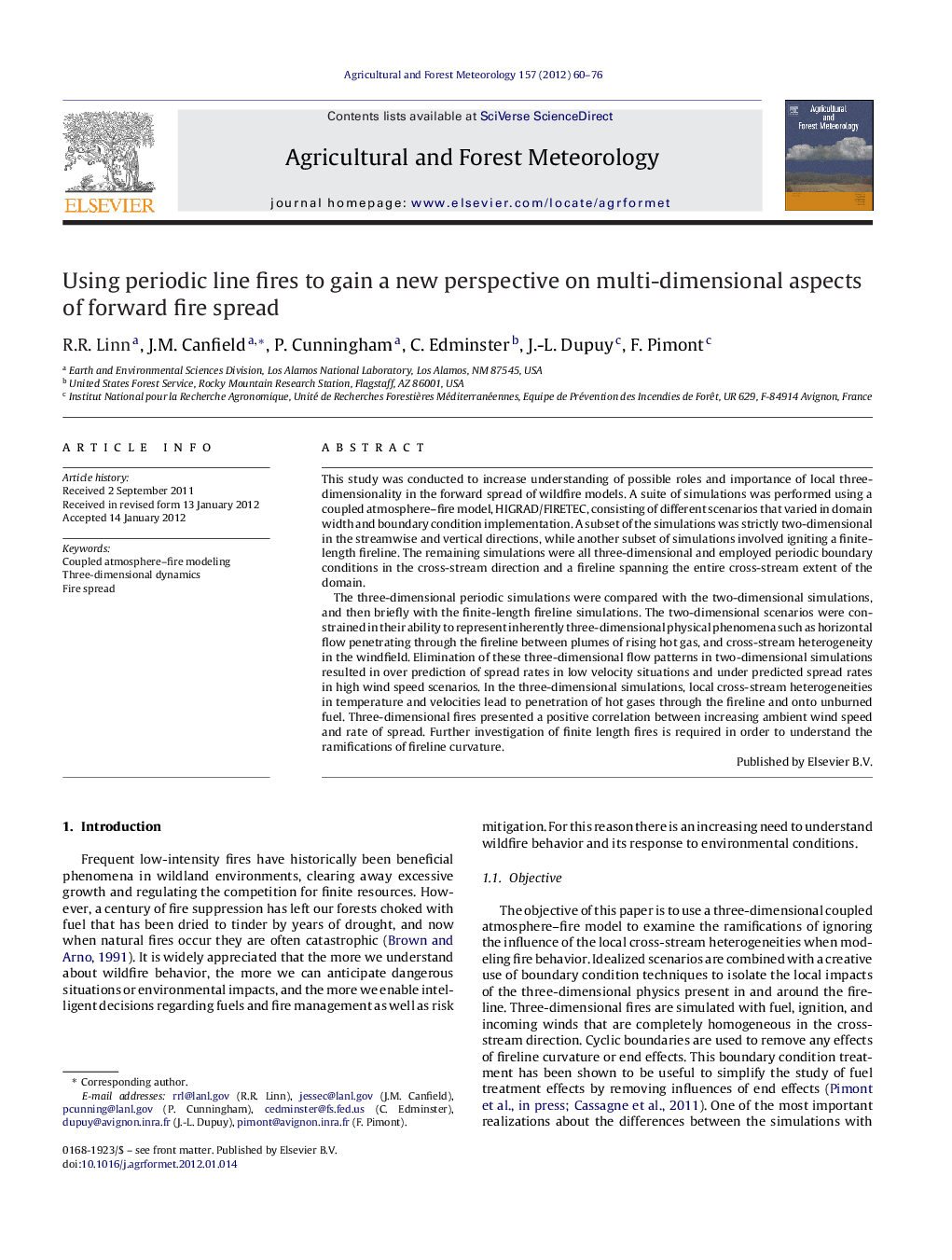| Article ID | Journal | Published Year | Pages | File Type |
|---|---|---|---|---|
| 82040 | Agricultural and Forest Meteorology | 2012 | 17 Pages |
This study was conducted to increase understanding of possible roles and importance of local three-dimensionality in the forward spread of wildfire models. A suite of simulations was performed using a coupled atmosphere–fire model, HIGRAD/FIRETEC, consisting of different scenarios that varied in domain width and boundary condition implementation. A subset of the simulations was strictly two-dimensional in the streamwise and vertical directions, while another subset of simulations involved igniting a finite-length fireline. The remaining simulations were all three-dimensional and employed periodic boundary conditions in the cross-stream direction and a fireline spanning the entire cross-stream extent of the domain.The three-dimensional periodic simulations were compared with the two-dimensional simulations, and then briefly with the finite-length fireline simulations. The two-dimensional scenarios were constrained in their ability to represent inherently three-dimensional physical phenomena such as horizontal flow penetrating through the fireline between plumes of rising hot gas, and cross-stream heterogeneity in the windfield. Elimination of these three-dimensional flow patterns in two-dimensional simulations resulted in over prediction of spread rates in low velocity situations and under predicted spread rates in high wind speed scenarios. In the three-dimensional simulations, local cross-stream heterogeneities in temperature and velocities lead to penetration of hot gases through the fireline and onto unburned fuel. Three-dimensional fires presented a positive correlation between increasing ambient wind speed and rate of spread. Further investigation of finite length fires is required in order to understand the ramifications of fireline curvature.
► Three-dimensional variation in wildfire behavior. ► Fire spread rate variation for different line geometry. ► Fire behavior differences for varying wind speeds.
